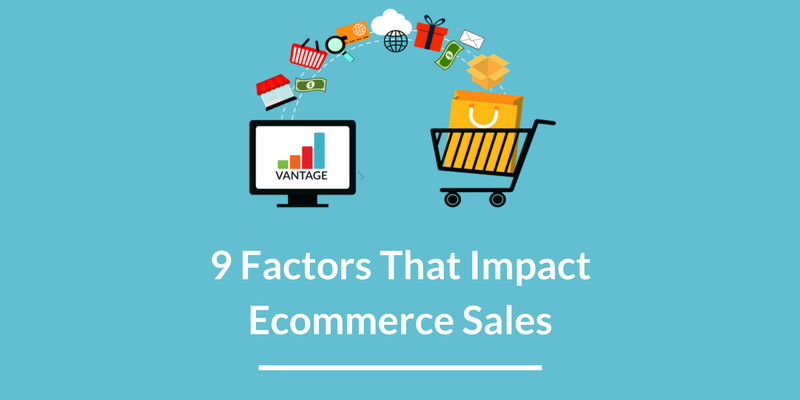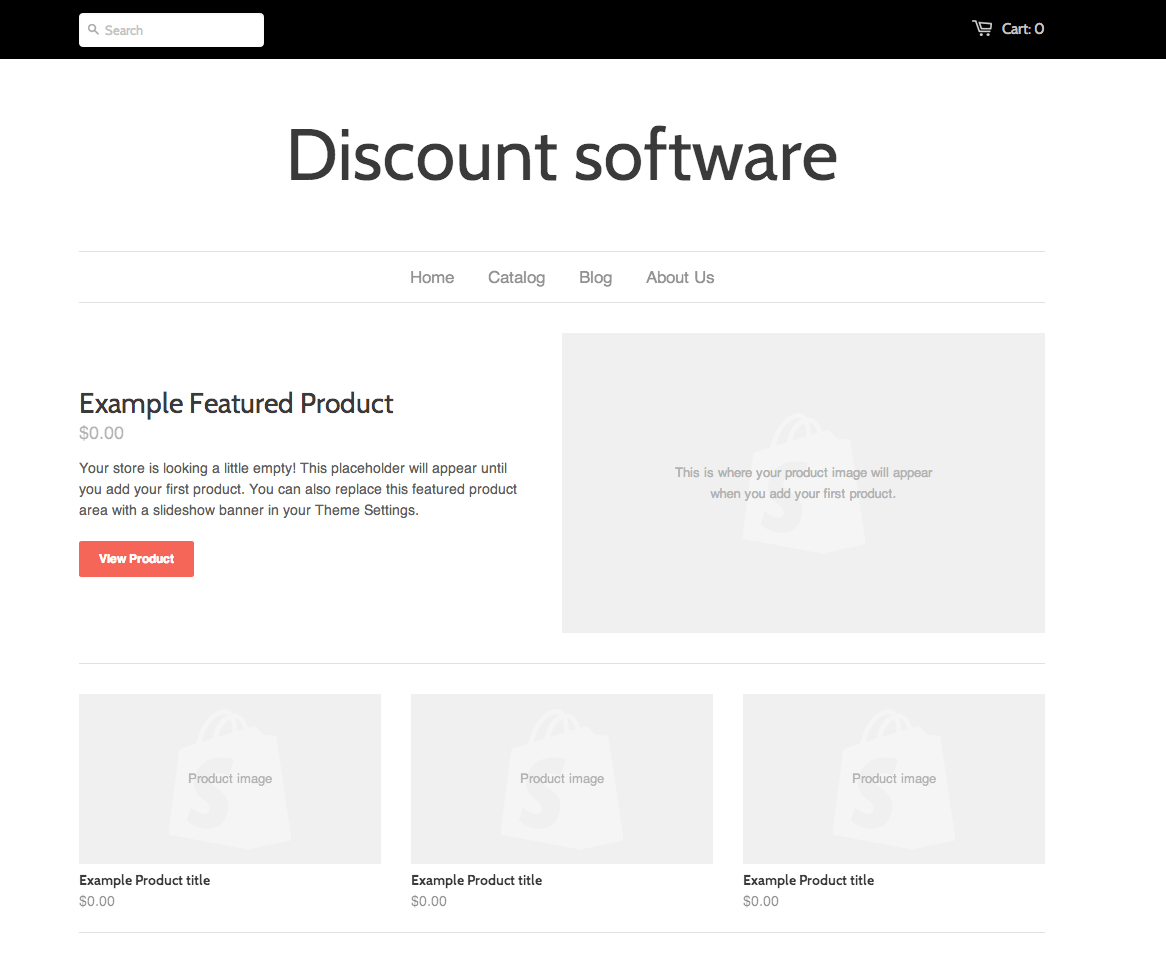
9 Factors That Impact Ecommerce Sales
When running an ecommerce store you have to worry about the user experience above all else. What effects user experience can range from your return policy to your level of customer service – even your social media reputation can affect your sales, repeat purchases and more!
Given the analytics component of our platform, we have access to a large library of data from ecommerce sites of various types around the world. Therefore we decided to dig into our database to see what really makes customers tick. By that, we mean what can turn them away from making a purchase and what factors affect the final purchase decision.
Let’s take a look at 9 factors that can impact your ecommerce store sales!
#1. Competitive Pricing
China’s influence of cheap products has made consumers adamant on searching for the lowest cost with the best product quality. This extends into specific product pricing as well, a 65” Sharp AQUOS Smart TV may be $1,200 at one store, but that same TV could be $200 cheaper at another. Consumers will dedicate hours upon hours to snatch up the best deal. While 10% markup on a product sounds good in theory, it is important for ecommerce store owners to benchmark their pricing across several competitors to make sure they are competitive on pricing and not falling behind.
Shopify created a great list of comparison shopping engines to benchmark your product pricing!
#2. Product Quality
Just as important as price is product quality. In some cases, this may be out of your control, but if you make or manufacture your own products, this is an important factor to take into account. If you’re wondering how much of a role perceived product quality means to consumers, take this into consideration. Up to 57% of people are less likely to purchase products that carry the Made in China stamp. This is because consumers perceive that the manufacturer chose a quick and inexpensive route when creating their product and feel that it’s likely of a lower quality than other similar products may be.
The manufacturing stamp is only a part of what makes up product quality (or perceived quality.) Off-site or on-site reviews around product’s use or functionality also have a factor. If a product has unexpected quirks that cause it to be a hassle to use or inefficient, you can expect customers won’t buy it. Be conscious of what consumers are writing about your product.
#3. Shipping Time & Cost
When you think of ‘fast shipping’ what’s the first ecommerce retailer you think of? Likely Amazon, right? Amazon has become the retailer of choice for many shoppers because of their fast shipping and extensive product offerings. The company has revolutionized the world of ecommerce by being able to offer same day shipping in many major cities and 2 day or same week shipping on most products.
There are many stores that keep it simple with a single shipping option to allow for flat rate pricing or so that they can offer free shipping. The incessant need for things to be done yesterday has been ingrained into the modern lifestyle and it shows when you look at the volume stores do when they offer fast delivery. To sweeten the deal, add well-priced shipping options on top of fast delivery.
While it would be hard to offer Amazon shipping speed and pricing, it’s encouraged to offer faster shipping options for those willing to pay for the convenience. Even better, offer a lower-price or free shipping when a customer spends more than a certain amount.
#4. Online Reviews
Product ratings are an integral factor in the decision to purchase. A whopping 40% of customers say they wouldn’t purchase technology products without first reading online reviews. That being said, the amount of research a customer puts in varies based on the price, location and many other factors. This means that having a wealth of reviews to read is important. Even if a product has negative reviews, it can increase sales in comparison to a product with no reviews.
To help with generating product reviews from existing customers, few if any do it better than Yotpo.
#5. Easy Return Policy
Even with ecommerce becoming more and more popular, there are still very few sites with a well laid out refund policy. Many bury their refund policy or make it confusing to understand which can mean many lost sales and many unhappy customers.
The more transparent you are about refunds, the easier it will be to deal with customers when they want a refund. If you don’t accept refunds be upfront and clear. However, even a very time limited refund policy is better than nothing. If you truly back the quality and satisfaction of your product, people will be more likely to purchase from you, especially given a simple and well-crafted refund policy (like the above).
#6. Loyalty Rewards
Many customers focus their sights on the lowest price, which makes generating sales more and more challenging. Building loyalty is the best option for generating sales as it can take up to 7 new customers to generate the same amount of revenue as a single repeat customer. Rewarding your customer for making a purchase is what can set you apart from all of the other retailers. Much like many opt to fly with certain airlines because they want to accumulate points, the goal is to have customers purchasing from you so that they can redeem their rewards down the road.
#7. Easy Navigation

An easy to navigate ecommerce store sounds like a simple feat until you learn companies spend millions of dollars per year to hire data scientists to optimize their navigation and even the best placement for a learn more button! This of course doesn’t mean that easy navigation is unattainable. I like to use Best Buy as an example of just how simple you can make a large store. Their navigation may seem cluttered but a lot went into the logic behind each department. Considering that their online store holds thousands of different product (( the navigation is easy to use and logical to a majority of their target market. Their main navigation is also broken up to highlight deals, brand based browsing and their vast knowledge base of guides and FAQs. This may require some additional help from a designer or developer to achieve but most ecommerce platforms also offer themes that have been modified and improved over time to help store owners.
Let’s look at Shopify’s default theme first. It has a simple to use navigation, with no sub-categories as it is made for stores with a handful of different products on sale. This navigation is simple and easy to understand, you have a homepage to show new products or top sellers, a catalog to show off your products, a blog to talk about your products and an about us page that will have some information about the company. It’s simple, easy and as the default Shopify theme, it’s quite popular.

When you have more products and need sub-categories, a side navigation is common. It allows you to separate into large categories, in this case, men and women, as well as have several sub-categories to separate your products further. This store theme doesn’t have a homepage like Shopify’s default theme, instead, it displays the products right away. It’s clean, simple and easy to navigate despite having hundreds of products.
Just make sure to keep things simple and always test your navigation. Ask a friend to look at your site and try to find something in particular, if they can’t find it, figure out what became a barrier so it can be fixed. You never know what small thing may be in the way of you and more sales!
#8. Word of Mouth Recommendations
Social media and review sites are great way to build credibility if you’re selling a $15 shirt or something else low cost. For the larger purchases ($200+) you need social proof. On web apps this usually comes as a testimonial tied to a picture and a name, but for ecommerce nothing works better than a direct, word of mouth referral.

The above example is for SpiritHoods, a SpiritHood is a $99 – $199 scarf/hat but the company itself also stands by the social cause of endangered animals. SpiritHoods uses a referral program to offer Email, Facebook or Twitter referrals directly to people you know. Everyone you refer gets a $15 off code and for every time purchase made with your $15 off code, you get $15 in credit to buy a SpritHood. Incentivized referrals like this are quite common among large ecommerce stores. In the same way you would be tempted to tell friends and family about that free gift you got with purchase at your favorite store, you would also tell your friends and family about the $15 they can save thanks to your referral code.
With more marketers building their own review sites to take charge of what is said about their products or brand online, a direct word of mouth referral is a powerful tool to increase sales.
#9. Ease of Checkout
Checkout complexity is a big factor in a store’s sales numbers. It if the final step that determines if a visitors turns into a customer. A single page checkout can improve your conversion rate by over 20% on average, as determined through A/B testing. Even with a single page checkout like you see on Old Navy there are still factors within the checkout that can make a visitor abandon their cart
Through testing and tearing down ecommerce stores we’ve discovered one of the biggest factors within the checkout process is the shipping cost calculation. By putting the shipping cost further to the end of the checkout process, you create a secondary prompt where the visitor will re-evaluate the total cost that is about to be incurred. By pushing the shipping cost calculation to the beginning of the checkout process, you increase the conversion rate of those who dive into your checkout funnel because you are showing the full cost up front.





Leave a Reply
You must be logged in to post a comment.